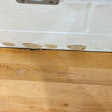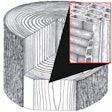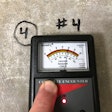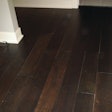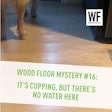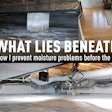The Problem
Last spring, I received a phone call from a salesman who worked for one of our distributors. One of their largest dealers had just installed about 1,200 square feet of cork tile in a newly built home, and now there was lifting and expansion along the edges of many of the individual tiles. No matter how many times they re-rolled the tiled surface, they could not get the cork tiles to lie flat. This was occurring in various areas of three rooms, as well as the hallway.
The Procedure
The home was built over a recently poured concrete basement. The cork was installed on a 5/8 inch wood subfloor with radiant heat on the first floor of the home. A pressure-sensitive adhesive was used to secure the floor, which was then rolled with an 80- to 100-pound roller.
The Cause
Upon arriving at the job site, I began noting many factors that ultimately contributed to the problem. Outside, I noticed that the exterior grading, as well as the installation of the gutters and downspouts, had not been completed. Upon entering the home through the two-car garage, I could see a significant amount of building material being stored on the garage floor. In addition, the overhead garage doors had not yet been installed.
As I toured the home, I noted several different types of flooring installed. One of the floors was quartersawn strip. This flooring showed signs of considerable expansion along some of the edges. I then inspected all the rooms and the hallway where the tile had been installed. The cork tile was indeed lifting, most noticeably along the outside walls and in front of the window areas. I inquired as to whether there had been any moisture testing done prior to installation. The response by the builder and installer was the same: They both felt it was dry enough for the installation to proceed. They admitted that no actual moisture testing had been done.
After completing my inspection, compiling all the data, and taking multiple moisture meter readings, my suspicions were confirmed. It was apparent that high moisture was the major contributor to the buckling floor. The problematic conditions were exacerbated by the storage conditions of the building materials. The builder informed me that the subfloor material had been stored in the open garage and, because it was springtime, probably had absorbed moisture from rain. In addition, the areas in front of some of the windows had been exposed to rain before the windows had been installed. To further compound the problem, no heating or air conditioning system had been running to regulate elevated moisture levels in the home. The day I was there, the relative humidity was 70 percent (the average in this region is about 40 percent).
Finally, the pressure-sensitive adhesive used on the original installation was not recommended for a radiant-heat installation, which experiences substantial temperature fluctuations in the floor.
How to Fix the Floor
I immediately recommended getting dehumidifiers in the home to help alleviate some of the moisture issues. I also recommended running the air conditioner to assist in lowering the humidity. Although this helped with the tile expansion, it did not help with the adhesive. Unfortunately, the damage to the adhesive had been done, and even though the area of installation eventually met the moisture requirements of the cork flooring and the adhesive, it was necessary to replace the floor.
Guidelines for both the pressure-sensitive adhesive used and the cork flooring state that the moisture level on a wood subfloor should not exceed 12 percent. Once the adhesive was exposed long enough to the moisture, the product re-emulsified, losing its tack ability. The moisture also was responsible for the expansion in the cork tiles.
It is necessary to use an adhesive that can handle the temperature changes without compromising the bond of the cork to the subfloor. After the moisture levels were stabilized at acceptable levels, the cork flooring was reinstalled using a moisture-cured urethane suitable for a radiant-heat installation.
In the Future
It is important that the dealer and builder do their homework to ensure that the products being used are compatible with the conditions of the job site. Moisture testing is not optional when installing cork or wood floors, and the results should be a determining factor on whether or not to proceed. The same considerations should be used when determining the correct adhesive to use for a specific application. When in doubt, a quick phone call to the manufacturer can save a job and thousands of dollars.




















